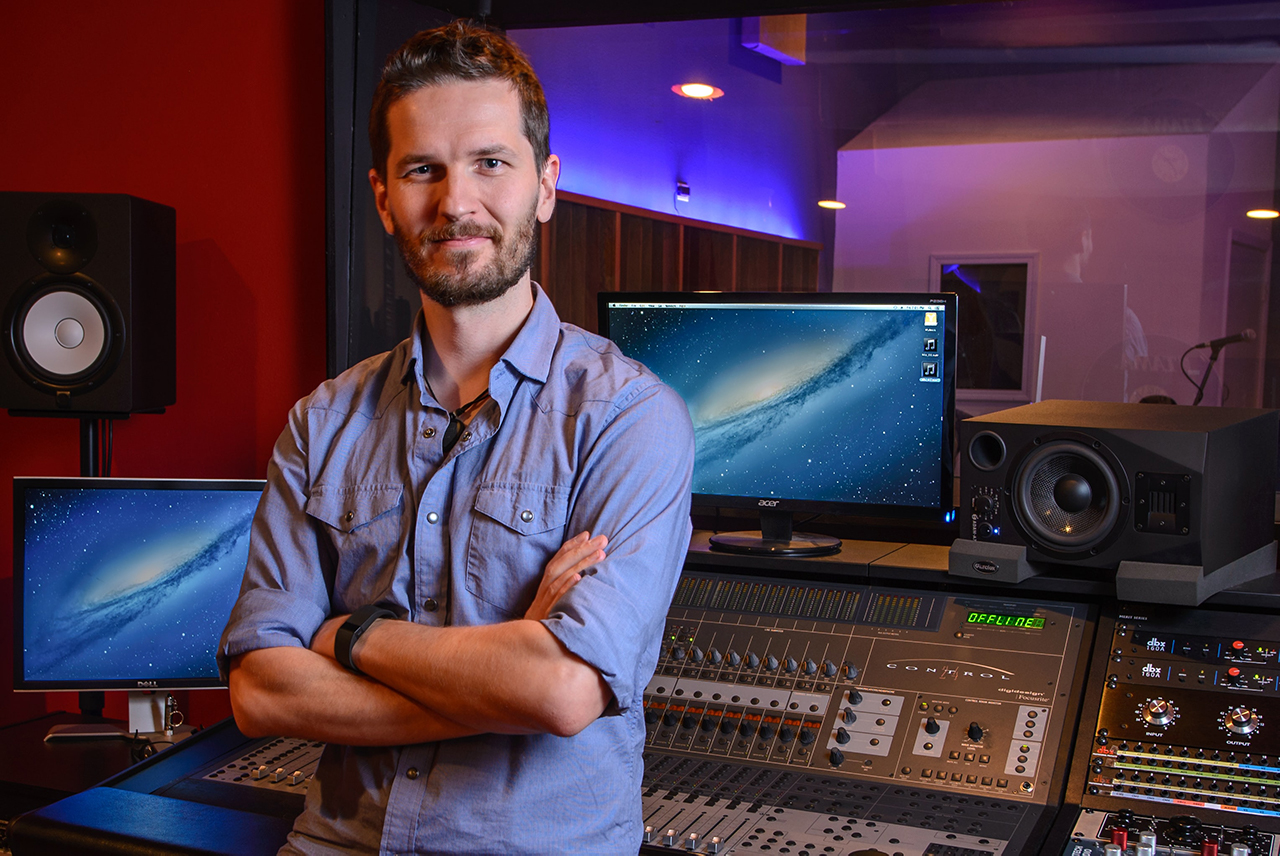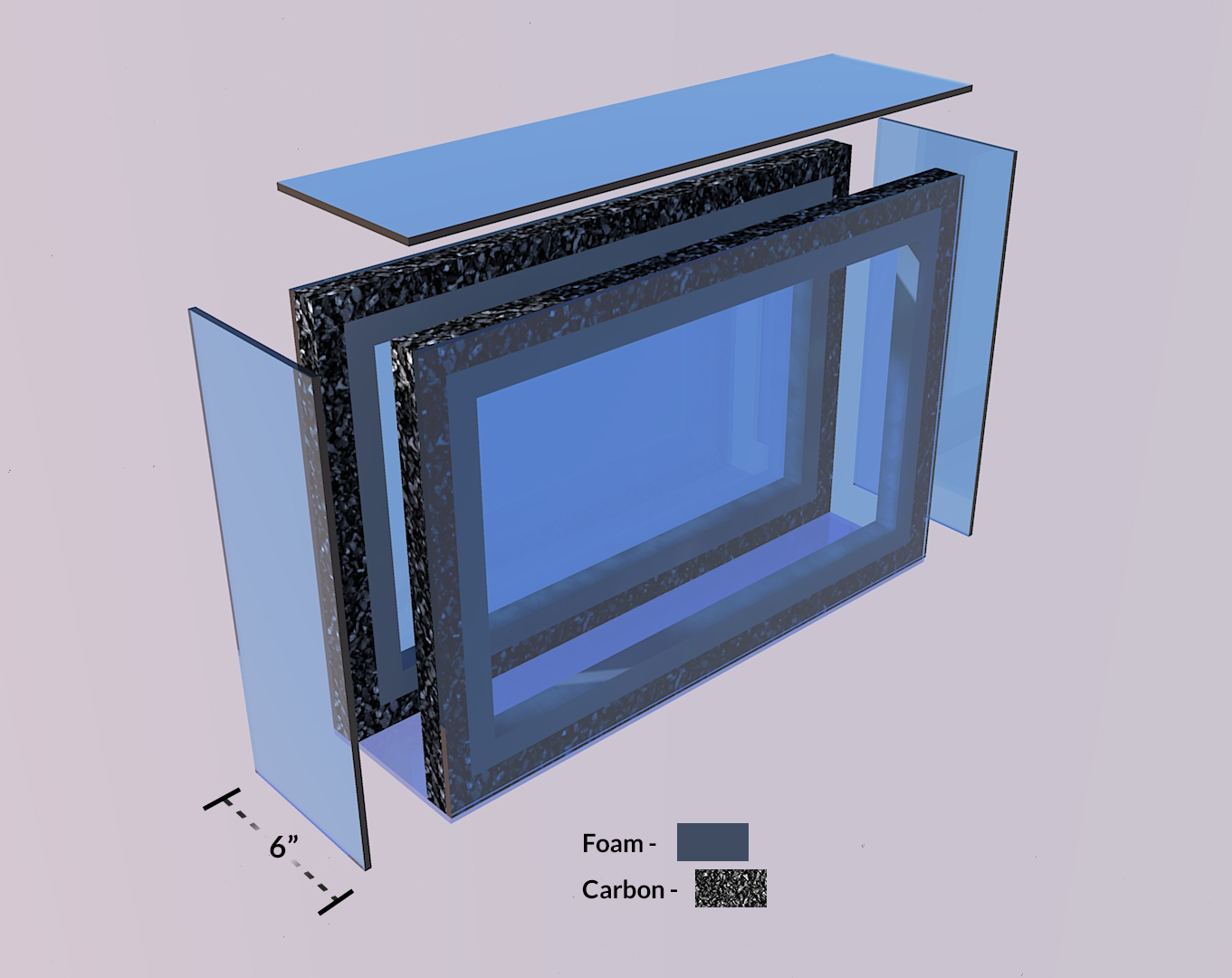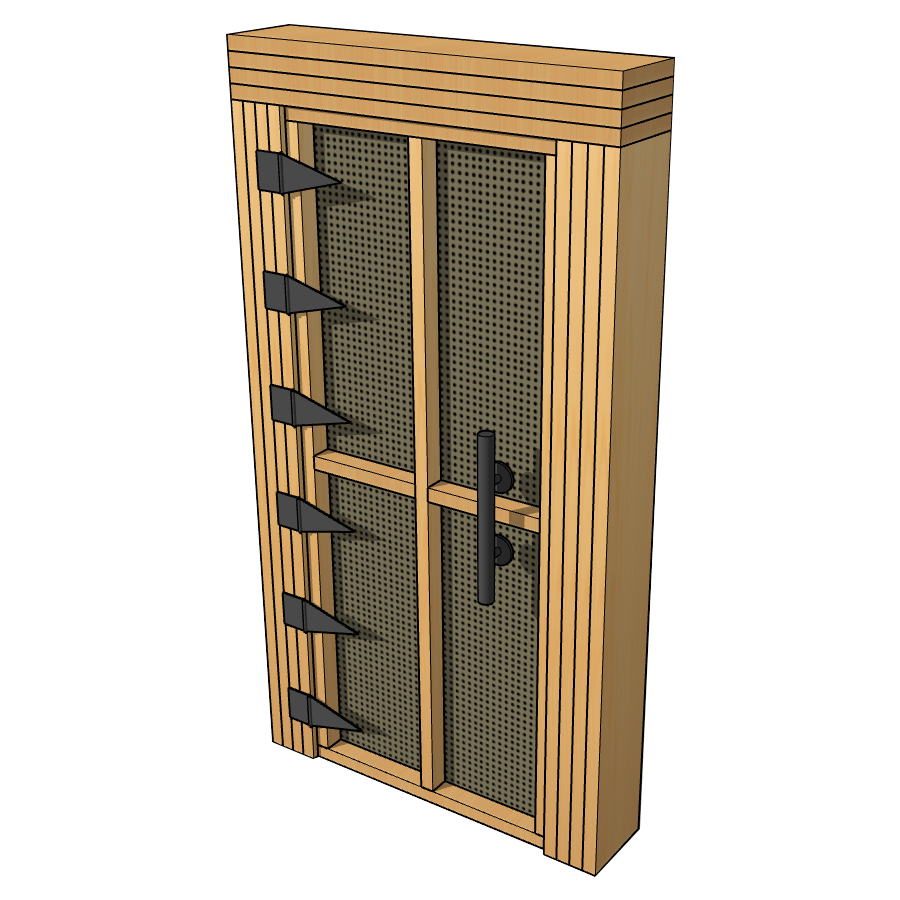Recording Studio Windows
Recording studio windows are both a blessing and a curse. They allow us to see the talent and what is going on in our live rooms. They allow us to help communicate with the vocalist. However, they produce some of the nastiest reflections from there surface areas. These reflections can have a negative impact on room frequency response. It particularly has an impact on middle-range frequencies where the vocals lie. This is the last place on our RTA where we want room distortion. We must be careful of these reflections within our design of all recording studio windows. We must make sure the angle the glass is positioned at does not have a negative impact with unwanted reflections at the mixing position. We can minimize reflections by outfitting the window with a foam collar. The foam collar of 6″ in width will absorb a majority of the reflections from the window surfaces.
Resonating Chamber
To build our recording studio windows, we need to make a sandwich of two glass plates and an air space. The air space must be calculated to balance the width and length of the glass sandwich. When we are constructing our recording studio windows, we are creating a resonant cavity that can produce noise. The cavity will resonate at the window sandwich depth and produce a resonant frequency where all frequencies above the resonant frequency will be heard. Working with recording studio windows, and their smaller depths, we can create a cavity that resonates starting at 90 Hz. which is the low-frequency beginning frequency content for the male voice. With the reflections from our recording studio windows and the energy-producing cavity, we must be careful with the design and materials we use. The first rule in small room acoustics is to do no harm.
Treating The Chamber
We have to absorb excess energy that is trapped between our glass sandwich. If we have a 6″ air space between the glass sections, we will be looking at a resonate frequency of 60 Hz. We will need to design the proper absorption technology along the inside border of our glass sandwich. We will use our carbon technology inside a perforated absorber around the inside edge of our glass sandwich. We will calculate the depth of the perforated absorber along with the hole width and distance apart. This perforated carbon internal “frame” will reduce the pressure within the chamber by absorbing excess pressure above 60 Hz. Larger cavity depths will produce lower resonant frequencies to absorb and what can be accomplished by increasing the depth of the perforated absorber. We can also increase the density of the carbon itself and thus manage more energy at lower frequencies. Our 2″ foam technology will absorb excess energy up to 6,300 Hz. Recording studio windows are a complicated structure.
Sound Transmission Class Rating System: https://en.wikipedia.org/wiki/Sound_transmission_class
STC
Our recording studio window serves as a barrier. We want to be able to see through it and not hear through it. We do not want noise from our live room getting into our control room. We build our glass panels to be 1″ thick. A laminated or safety glass configuration could be used to achieve the 1″ density associated with a sold piece of 1″ glass. Why 1″? We have found that 3/4″ glass moves at higher amplitudes with lower frequencies. A piece 1/2″ deep moves too much to be a serious contender. Another option is the acrylic plate. It has similar densities as glass. With acrylics, you have to be more careful cleaning the surface areas. Acrylic will scratch more easily than glass. Special liquid cleaners are required.
Window Frame
The window “sandwich” must be installed with a supporting structure. It could be a wood frame construction. It could be concrete and many other options prevail. Let’s examine the wood frame technique. Since we will have 2 – 1″ plates of acrylic or glass, we will have lots of weight that must be supported. The finest window in the world will not work if the frame or support structure can not support the window weight and is not sealed properly. Sound is like water. It will find the smallest opening and not drip like water but flow through that tiny opening like a broken water pipe. You could have a 4,000 lb window with a pinhole leak in the seal of the window and the design goal of the window fails. Here is a graphic showing a frame for a door. The same multilayered studs are used for the window support structure.
Reflection Management
The angle of the window will need to be calculated to minimize primary reflections from its surface area. The excessive reflections may occur at a troubling frequency range. We can attenuate the energy from the reflections off the glass surfaces by fitting the window perimeter with a foam frame. We would use a 6″ deep foam collar that would provide enough surface area to minimize issues by 70%. This foam collar will not impact the line of sight through the window. Reflections from windows and consoles are audible. To test this, take a piece of 2″ open-celled acoustic foam and place it on your console. Play a song. Remove the foam and play the same song. Listen to the difference. It is amazing.
Video Monitoring
I work in a lot of studios with and without windows. The without windows use video cameras. I always ask the engineers how the talent responds to the video camera instead of a window. They tell me that it depends on the age of the client. The younger talent prefers the camera and the older talent, say after 45 – 50, prefer the window. It appears that people prefer what technology they “grew” up with or were exposed to. People you use the camera say that they can focus more on the music without someone directly looking at them. Others like the windows enjoy the direct line of sight communication. I would make every effort if you are building a new studio or rehabbing an existing one, stay away from windows. The costs in materials and negative acoustic performance outweigh any other benefit.
About Us At Acoustic Fields: https://www.acousticfields.com/about/









